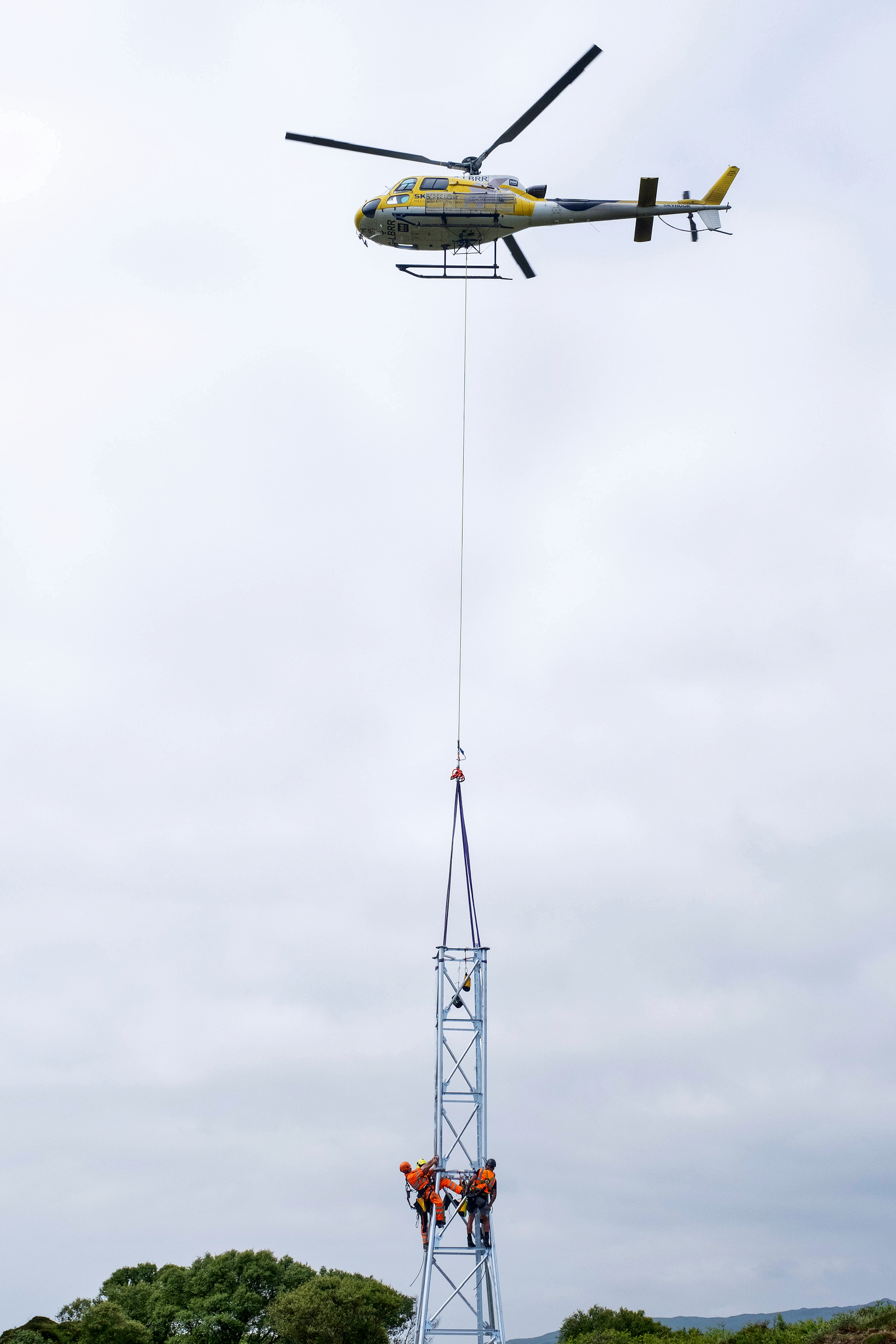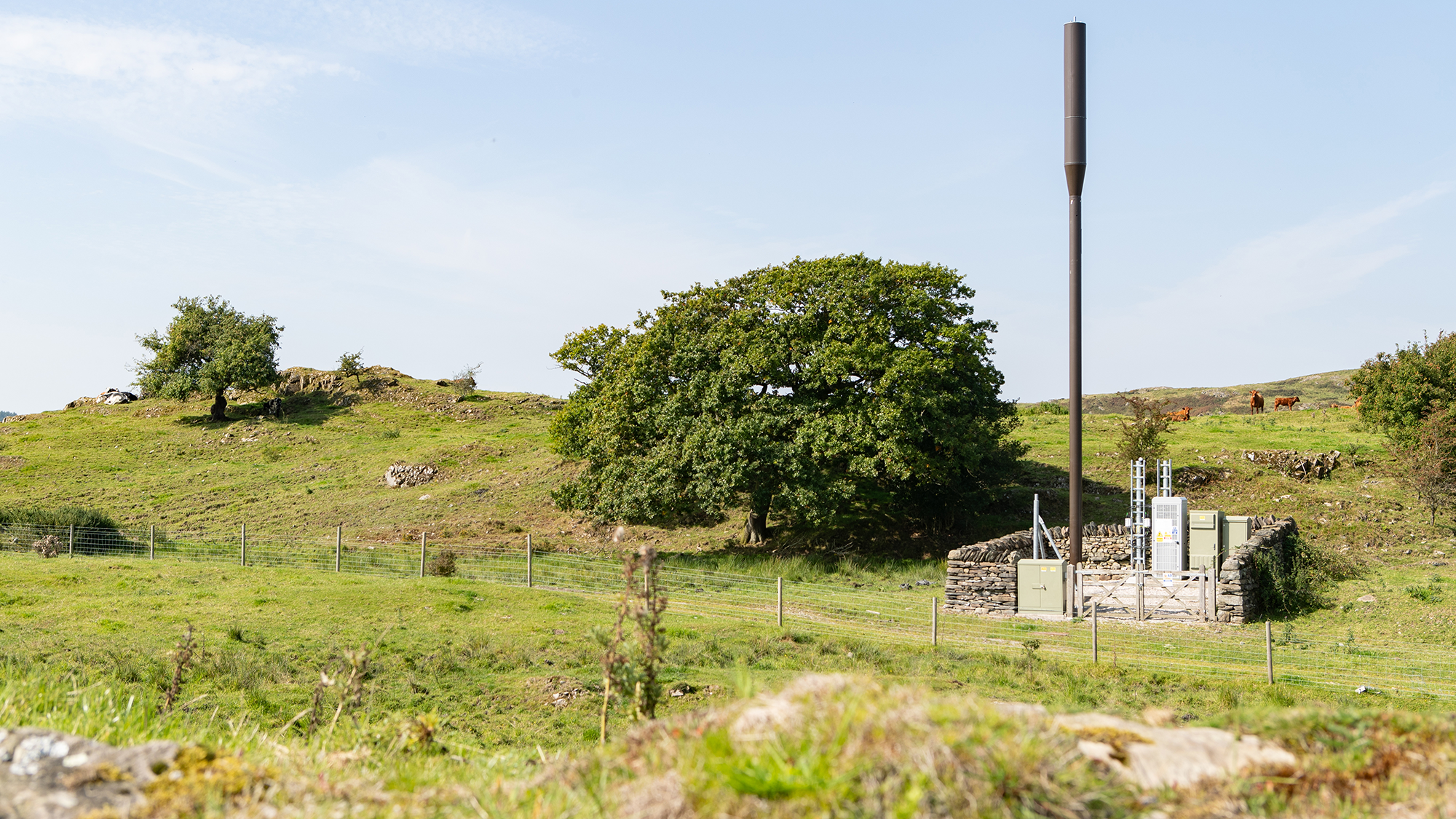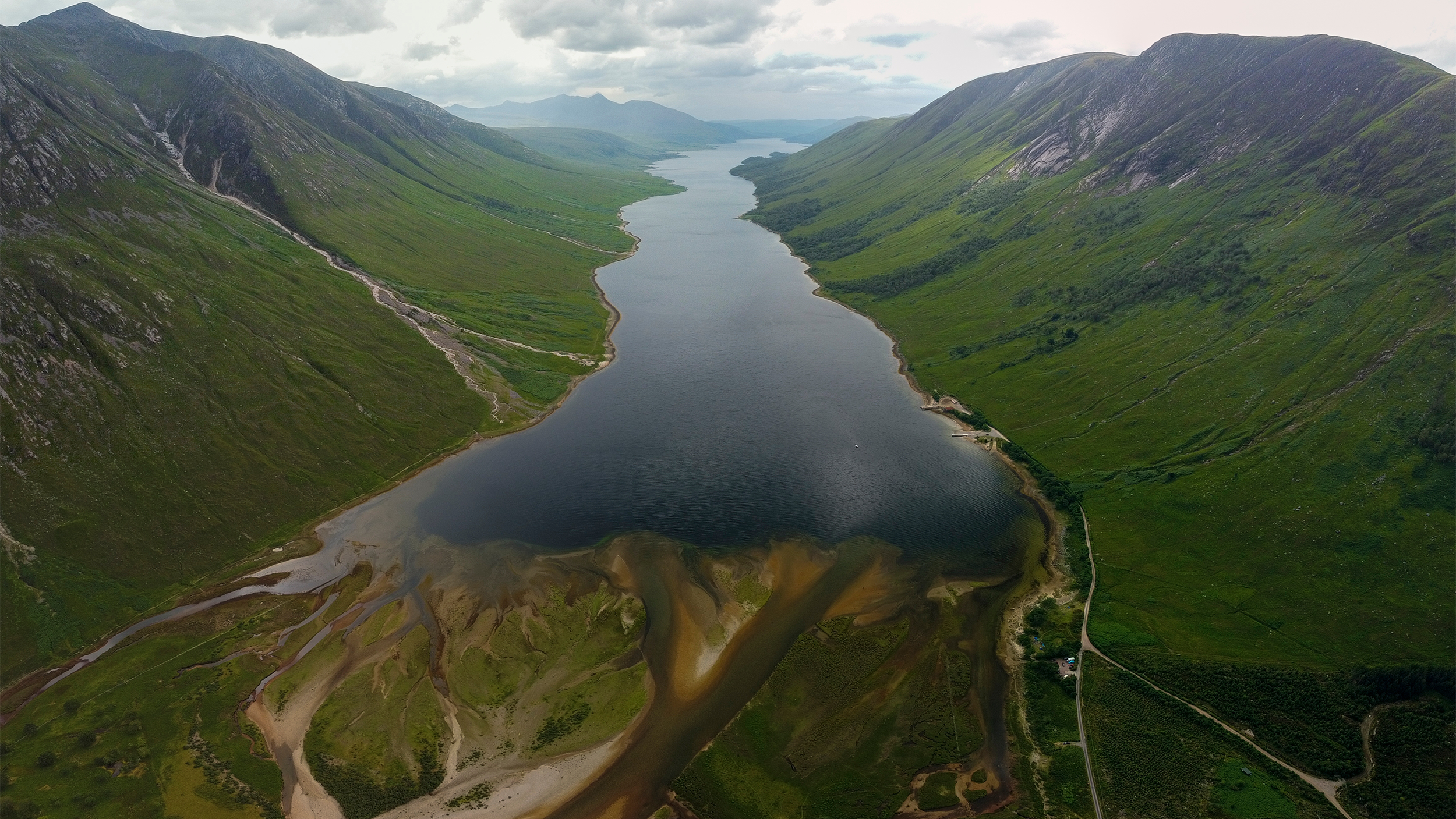
Constructed emergency alert system mast, Skye, Scotland. © DMSL
In 2020, the UK government and mobile network operators (MNOs) EE, Three, Virgin Media O2 and Vodafone started work to increase connectivity in the countryside through the Shared Rural Network (SRN) programme – which at just past the halfway stage is making good progress.
The programme is designed to make fourth-generation (4G) mobile telecommunications available across 95% of the UK landmass. It is the first time that the government and MNOs have collaborated on a programme of this scale.
In the first stage, the MNOs are investing £532m to upgrade their existing networks in areas where there is some 4G coverage but not from all four operators, areas known as partial not-spots. Subsequently, an additional £500m of public investment will be used to build new masts targeting hard-to-reach areas with no coverage at all, known as total not-spots.
All four MNOs will share the publicly funded masts to provide coverage, while part of the government investment will be used to make some new and existing emergency services infrastructure commercially available for the operators as well.
Extended connectivity offers range of benefits
The programme aims to ensure that rural communities will be at less of a disadvantage, compared to more urban areas. Fast broadband and a reliable phone signal are no longer just nice to have but an expectation.
The SRN is trying to cover areas that have some of the lowest levels of connectivity in the UK. Without this investment, people and businesses will miss out on the benefits that come from improved geographic mobile coverage, such as helping first responders, protecting hillwalkers, cyclists and mountaineers, tackling rural crime, facilitating online learning and working, and giving businesses the support they need to grow.
A recent study analysed the socio-economic impact of 4G across the UK and found that reliable mobile signal is helping transform local economies. Small businesses, freelancers and tourists all derive economic benefits from coverage, and there are also significant advantages for social well-being and safety.
The SRN is not the first programme targeting rural coverage, and it builds on the success of the Scottish 4G Infill programme to improve mobile connectivity in rural areas that have no coverage by seeking suitable mast locations to cover most of the UK.
Each of the UK's four nations has specific coverage requirements that the mobile operators must meet as part of licence agreements with Ofcom, the regulatory body for the programme. If these are met, the SRN and Ofcom forecast that outdoor 4G geographic coverage will rise to the levels shown in Table 1.
Targets shift from population to geographic coverage
Although better rural connectivity is a core part of modernising the UK's digital infrastructure, operators have found the economics challenging given the high costs and low return on investment.
To provide the forecast coverage improvements, mobile operators will need to install infrastructure to cover wide geographic and often remote rural areas. Historically, obligations were instead targeted at population coverage, which resulted in network rollouts that focused on the most densely inhabited areas.
Combined with the higher costs of installing infrastructure in the countryside and the smaller number of customers in these less-populated areas, the unintended consequence was that rural parts of the UK were underserved in terms of digital connectivity, and at risk of being left behind. The SRN is therefore structured so its publicly funded elements target not-spots and anywhere infrastructure is unlikely to be built in the future.
Total geographic coverage of 95% should especially benefit left-behind rural areas, which are unable to access basic services online. This level of coverage should encourage growth in local economies and productivity, improve consumer choice, benefit tourists, increase equity between rural and urban areas, and enable better health and safety.
As 99% of premises already have coverage, the programme focuses on providing connectivity wherever people are. This might include farmers wishing to use new technology, tourists visiting national parks or anyone exploring remote areas.
For the first time, people in difficulty will be able to ring 999 in many areas where there was previously no coverage at all, reducing reliance on expensive alternatives such as private radio systems and satellite phones, and allowing emergency services to locate them accurately. The new masts will also allow first responders immediate access to life-saving data, images and information.

Helicopter mast build, Uist, Scotland. © DMSL, photo by VMO2
Sustainability aims to offset landscape impact
However, there remains a balance to be struck between providing new coverage and considering the effect that infrastructure can have on landscapes and the environment.
Under the licence agreements between Ofcom and mobile operators, specific rules acknowledge that masts will need to be sited in areas where they may have environmental and visual impacts.
The SRN aims to improve mobile coverage without duplicating infrastructure, though, reducing this impact. By sharing resources, MNOs can minimise the carbon footprint of installing, operating and maintaining mobile sites, while the programme is also exploring the potential for alternative off-grid power sources, including renewable energy.
With sustainability in mind, better connections can enable the introduction of smart transportation, smart buildings, smart manufacturing and smart agriculture. These can, for instance, lower household energy consumption through smart metering and reduce the need for travel by powering remote working.
Digital connectivity can also support real-time monitoring of environmental conditions and the management of natural resources, helping conserve rural landscapes and biodiversity. Uses include farmers getting notifications from calving sensors to reduce calf mortality rates; researchers gathering live data from peatland restoration projects; scientists being able to track salmon levels by monitoring water quality and temperature; and using sensors to indicate tree health through soil moisture and sway sensors.

Mast in farmer's field, Lake District, England. © DMSL, photo by EE/BT
Collaboration critical to SRN success
To ensure the smooth rollout of a programme of this scale and complexity, it is essential to collaborate with a range of stakeholders.
Working with landowners is a key aspect of the programme, and there is already positive engagement with the MNOs and their suppliers from most site providers and their agents. We have seen agents collaborate to arrange access for site visits and surveys, organise use of estate equipment or accommodation and, importantly, negotiate lease agreements.
As the industry-led element of the programme came to an end this summer, coverage has been improved across the country. Although still to be verified by Ofcom, three of the MNOs recently announced that they have met their targets to cover what were partial not-spots.
Ofcom's Connected nations reports provide coverage figures, with the next due in December. However, the spring 2024 report revealed that, since the SRN programme was agreed in 2020, more than 400,000ha across the UK now has 4G coverage for the first time – equivalent to the area of the Cairngorms national park. Additionally, nearly 1.5m ha has new coverage from all four operators, representing an area slightly larger than the size of Northern Ireland.
Publicly funded phase now under way
Work on the publicly funded side of the programme, targeting total not-spots, has meanwhile had to go through more regulatory processes to meet requirements for open, fair and transparent competitive procurements. The programme has also spent the past 18 months investigating suitable sites.
Originally it was estimated that around 315 publicly funded masts would be needed to meet coverage obligations. However, our teams have worked hard to reduce this number and the current plan has around 260 proposed sites. Our goal is to reduce this further so we can fulfil the obligations with fewer sites.
To achieve this, we recently began a categorisation process, taking into account a range of factors for the proposed mast locations. This includes working with special interest groups such as the John Muir Trust to understand their views and inform decision-making. As a result, we hope to establish collaboratively which masts will be most beneficial to all parties.
Meanwhile, operators are continuing to submit planning applications, and work building the first publicly funded mast began recently in East Gerinish on South Uist. This will provide coverage for a significant proportion of both South and North Uist.
As Table 1 indicates, the SRN's goal is to achieve 84% outdoor geographic coverage from all four MNOs. The starting point was 66% and we have already reached 72%, while coverage from at least one operator has risen from 91% to 93% and is targeted to reach 95%. These figures represent a huge amount of work from all the operators, suppliers, agents and surveyors, and they will continue to rise as the programme progresses.
The ambition is to make sure most people can benefit from 4G mobile services, providing coverage essential for everyday life as well as when it is most needed. Thank you to those RICS members who have worked with us to increase coverage so far; we look forward to continued collaboration.

